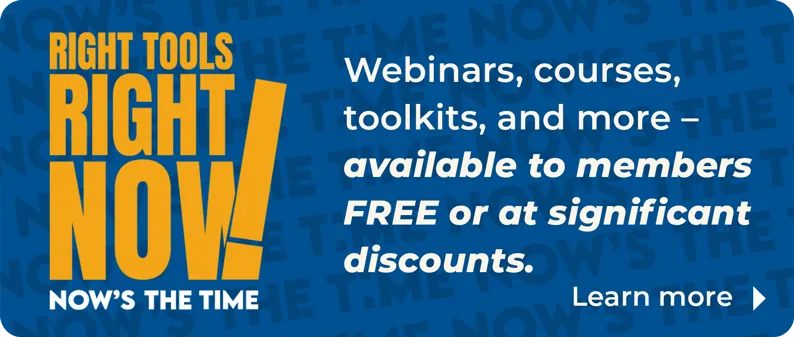As America’s transportation system runs low on money, one way to bridge the gap between needs and available funds is through public-private partnerships (PPPs). PPPs may be initiated to construct new facilities, to operate and maintain existing ones, or both. On the positive side of the ledger, they may reduce project costs and give government improved access to innovation and technology. But on the other hand the public can grow dissatisfied when the control of public assets rests with private companies and those companies set and collect tolls and fees. Debt financing and environmental protection issues may also be more problematic with PPP projects.
America’s transportation system is running out of money. The gas tax, the primary source of revenue for the Highway Trust Fund, has not been raised in 15 years. When state and local governments run short on money from fuel taxes and tolls for transportation improvements, they may look to other sources, such as property taxes and other levies on real estate (e.g., transportation impact fees charged to new construction). In any case it is generally agreed to be a bad idea to raise taxes during a recession.
Yet America continues to need to build new transportation infrastructure and to maintain the infrastructure we already have.
One possible way to bridge the gap between needs and available funds is through public-private partnerships. A “public-private partnership” (PPP) is a contract between a public-sector entity and a private-sector entity. In the current transportation policy context, PPP refers to special agreements that assign a greater degree of responsibility to the private entity. Thus, PPPs delegate some of what has historically been thought of as a public agency role to a private entity. PPPs embody elements of “outsourcing” and may also entail partial or full “privatization” of public resources or assets.
The public-sector entity involved in a PPP may be a federal agency, a state agency, a regional agency, or a local government. The private-sector entity may be a single company (corporation or partnership) or, more often, a consortium or team of companies. These private-sector entities have money to be invested that far exceeds government’s current capacity to tax its citizens and build infrastructure itself. In some cases, their profit motives may also make them more efficient and better at containing costs than government.
Public-private partnerships have been common for many years in Canada and Europe and have been used widely for certain specific activities in the United States. PPPs are now becoming much more common in the United States and are being used for a broader range of contractual arrangements, although they are still most commonly used to deliver very large projects (over $1 billion).
There are important policy issues associated with PPPs that can and do lead to intense public debates about protection of the public interest. In most cases, public-sector rules governing procurement processes and contractual terms require revision to provide a secure legal framework for PPP arrangements.
Types of Public-Private Partnerships
PPPs have been used on a wide variety of transportation projects, especially in the transit and highway modes, and the terminology used to describe the various types of PPP agreements can be confusing. The Federal Highway Administration (FHWA) has been active in defining PPPs and in providing guidance for their use on highway projects. The following discussion is based on a classification system developed by the FHWA. (A source citation for this is provided below.)
Construction of New Facilities. PPPs formed to build new facilities (freeways, rail lines, etc.) can be structured in three ways:
- design-build;
- design-build-operate-maintain; and
- design-build-finance-operate.
Design-build is a project delivery method through which a public agency executes a single, fixed-fee contract for both architectural/engineering services and construction. The design-build entity may be a single firm, a consortium, joint venture, or other organization assembled for a particular project. In a design-build partnership, the private-sector entity is responsible for the design and construction phases of the project, while the public agency is responsible for the financing and subsequent operation and maintenance of the new facility.
In a design-build-operate-maintain PPP, a private-sector entity (firm, consortium, joint venture, etc.) is responsible for the design and construction phases of the project and also for operation and maintenance once the project is built, usually for a stated period of time.
In a design-build-finance-operate PPP, significant authority is delegated to the private entity, which will not only undertake the design and construction work and accept responsibility for operation and maintenance, but will also provide a portion of project financing. These are becoming more common for toll roads, rail transit lines, parking garages, and other revenue-producing transportation facilities.
These PPP contracts have a stated term or duration. In most but not all cases a public agency retains the underlying ownership.
Existing Facilities. PPP agreements are also used to provide for operations and maintenance of existing facilities. Such PPPs are generally structured in one of two ways: as an operations and maintenance concession or as a long-term lease. In an operations and maintenance concession, a private-sector entity is hired by a public agency to oversee operations and maintenance of a capital asset and may have other management and public service responsibilities.
Transportation facilities that generate revenues can also be leased through PPPs to a private-sector entity that pays an upfront fee to lease a publicly-financed facility from the public agency for a specified length of time. The private-sector entity is authorized to collect tolls or fares on the asset while overseeing its operation and maintenance. This arrangement places greater responsibility on the private sector for the public service performance of the facility.
Hybrid PPPs. A variety of other PPP structures have been developed. In one scenario, a PPP may be arranged in a lease-develop-operate structure, whereby a private-sector entity is granted a lease to operate and expand an existing facility and can expect a return from the investments at the end of the lease. Other PPPs include build-own-operate, build-operate-transfer, buy-build-operate, and build-develop-operate. These partnerships are not often used for transportation facilities and may present challenging public policy issues.
Pros and Cons of Public-Private Partnerships
The use of PPPs in transportation has been the subject of some controversy and ongoing public policy debate, including as part of the pending surface transportation reauthorization legislation. Public-private partnerships are not appropriate for every project and the public agency issuing the agreement must be in a position to procure and manage the PPP responsibly. While the use of PPPs is clearly increasing, agencies considering venturing into this area should be aware that there are pros and cons related to PPPs. Arguments in favor of and against PPPs are described below. In general the assumption behind these is that competitive forces in the private sector give rise to greater creativity, more rigorous management, and reduced costs.
Accelerated Project Completion (pro). The public is accustomed to, but impatient with, delays in the completion of public infrastructure projects. Most design-build and other PPP contract types include specific completion dates that can be enforced through liquidated damages provisions and similar means. While such provisions also could be used in regular design and construction contracts (and are), the time savings in PPP projects come from rolling the entire process into a single agreement. Thus, while a transportation agency might have planning, design, and construction management departments that tend to operate through linear project development processes, private-sector companies are (arguably) less bureaucratic and better able to manage multiple tasks in parallel processes that can accelerate completion.
Reduced Project Costs (pro). When public-sector agencies put construction projects out for bid, most design decisions have already been made. Contractors bidding on the contract are limited in how much creativity and innovation they can bring to bear on the project. They can try to reduce the unit costs of project materials, or they can develop construction techniques that save time and labor. But when projects are put out for design-build competition, the potential range of innovations companies can bring to bear is substantially increased. This generally does result in lower total project costs. More importantly, when the design entity and the construction entity are the same, a motivation is created to seek cost savings through design that may not be present when these two functions are performed by different entities.
Innovation and Technology Sharing (pro). Government agencies can benefit from the private-sector innovation encouraged by PPP contracting. Techniques developed by companies to accelerate, streamline and simplify projects (leading to cost savings) can be adopted by public agencies for their other non-PPP projects and can be shared with other agencies and with companies in the private sector, with resulting expanded public benefits.
Control of Public Assets by Private Companies (con). Some of the PPP structures turn public assets over for management and operation by private entities, in some cases for long periods of time (decades). This opens the door to situations in which members of the public are dissatisfied with performance of the private company and have no direct recourse other than whatever performance measures were included in the original PPP contract. Even where performance is acceptable there can be a public perception that public assets have been turned over to private companies, leading to political pressure to undo the PPP agreement.
Private Collection of Tolls and Fees (con). Some PPP projects--such as toll roads and rail transit lines--involve the private collection of tolls and fees from the traveling public. In some cases the private entity retains these revenues as part of the business deal. This sets up a situation similar to that encountered with public utilities (electricity, natural gas, etc.), where prices charged to the public must be controlled somehow to protect the public interest without unduly interfering with the profit motive inherent in such PPP agreements. Of particular importance may be provisions governing the life of the agreement to prevent collection of tolls or fees long after the initial cost of the transportation asset has been recouped. On some PPP projects, the collection of tolls may be introduced in an area where such charges have not previously been collected. This may accentuate a tendency for the public to perceive that the PPP agreement is “unfair” or inequitable for certain users.
Environmental Protection (con). When public-sector design and construction activities are turned over to private entities through PPP contracts, issues associated with environmental protection can emerge and can be difficult to resolve. Where.as political processes surrounding public agencies guarantee at least some amount of access and accountability on traditional projects, a poorly-drafted PPP contract might have the effect of insulating the private-sector partner from accountability for environmental impacts.
Debt Financing Costs (con). In certain situations, PPP projects potentially can be more costly than traditional public projects. Depending on the details of the PPP deal--and on current state and federal laws and regulations--the process of raising capital can be more expensive for a private-sector entity than it would be if the government directly borrowed the necessary money. Also, since government agencies do not attempt to earn a profit, a PPP arrangement can increase costs simply because a profit margin is necessary to attract private-sector partners to the deal. Although the assumption is that this is more than offset by PPP efficiencies, care must be taken to ensure that that is the case.
Examples
The following are examples of transportation projects completed through the use of PPPs. There are examples from each type of partnership, showing the variety of ways transportation projects are completed by agreements between the public agency and private sector.
E-470 Tollway, Denver, Colorado
E-470 is a 47-mile toll highway running around the eastern perimeter of the Denver metro area. It begins at State Highway C-470 at I-25 in Douglas County south of Denver, runs east and then north through Aurora, passes along the western edge of the Denver International Airport, and turns back towards the west, terminating at I-25 on the north end of the metropolitan area just south of 160th Avenue.
The project was sponsored by the E-470 Public Highway Authority and construction ran from 1989 to 2003. This project used the following PPP elements:
- Design-build procurement
- Privately held revenue bonds
- Private operations
- Accelerated joint interchange development
- Private snow removal
Hudson-Bergen Light Rail, Hudson and Bergen Counties, New Jersey
New Jersey Transit, the New Jersey DOT, and the Federal Transit Administration sponsored development of a 20.5-mile light rail line running along the Hudson River waterfront in Hudson and Bergen counties. The corridor includes 32 stations and five park and ride lots. The project was awarded to 21st Century Rail Corporation in 1996 and will be completed in 2010. A design-build-operate-maintain approach was used to shorten the development process by eight years.
Foley Expressway, Baldwin County, Alabama
This 13.5-mile-long toll road in Alabama includes a six-mile privately financed section and a 7.5-mile public section. The total cost of the project was $44 million, with $36 million being funded by private bonds. There is a $2 toll charged on the Foley Beach Express Bridge, which is part of the six-mile privately financed section.
DC Streets, Washington, D.C.
The District of Columbia Division of Transportation, in cooperation with FHWA, entered into a five-year, $69.6 million contract with VMS, Inc. for the maintenance of city streets, tunnels, pavements, bridges, roadside features, pedestrian bridges, roadside vegetations, guardrails, barriers, impact attenuators, and signs in Washington, D.C. The operating concession also includes citywide snow and ice control responsibilities. The contract, running from 2000 to 2005, was the first urban application of street maintenance outsourcing to the private sector. The maintenance contract was performance-based and required the contractor to apply asset management practices with the goal of using innovative methods and procedures for maintenance. Rather than define maintenance practices, the contract set up performance measures, leaving open the potential for private-sector innovation and cost savings.
Chicago Skyway
The Chicago Skyway is a 7.8-mile elevated toll road connecting I-94 in Chicago to I-90 at the Indiana border. In 2004 the City of Chicago awarded a 99-year concession to Cintra/Macquarie, who bid $1.83 billion dollars to assume operations of the skyway and the right to fare revenues. Skyway Concessions Company, LLC (SSC) was selected to act as the operations company, to take responsibility for maintenance costs, and to retain toll and concession revenues. This agreement between SCC and the City of Chicago was the first long-term lease of an existing toll road in the United States.
Pocahontas Parkway, Greater Richmond, Virginia
Construction began on the 8.8-mile Pocahontas Parkway in 1998. The roadway opened to traffic in stages beginning in 2002. The Virginia DOT entered into an Amended and Restated Comprehensive Agreement with Transurban, who has an Asset Purchase Agreement with the Pocahontas Parkway Association (PPA). Under the terms of those agreements, Transurban has acquired the sole rights to enhance, manage, operate, maintain and collect tolls on the Parkway for a period of 99 years.
Suggested Websites and Research Reports
The following websites and research reports are available online for more in-depth discussions of public-private partnerships.
The Federal Highway Administration maintains a website that is generally pro-PPP, but provides useful information, including the PPP classification system used above and the project examples.
The National Council for Public-Private Partnerships maintains another pro-PPP website. A report “For the Good of the People: Using Public-Private Partnerships to Meet America’s Essential Needspdf” (2002) is available on this website.
U.S. Department of Transportation. Report to Congress on Public-Private Partnerships. 2004.
Werner, Frederick J. Public-Private Partnerships: Introduction to PPPsppt. Federal Highway Administration - National Resource Center. 2006.
PPP contracts that privatize roadways have come under extensive public policy scrutiny. A report on this subject was put out by the U.S. Public Interest Research Group’s Education Fund in 2007.








